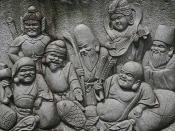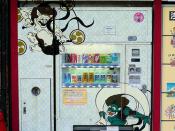Human cloning: A Technology That Replaces Humanity
On July 5, 1996 in the town of Roslin, Scotland a cloned lamb was born. The people that gathered around to see the birth were not sheep farmers, but scientists who worked at a research center called the Roslin Institute. They named this lamb Dolly. Dolly became the world's most famous lamb because she was the first of her kind.
Cloning is an exact genetic copy of a living thing. The genetic makeup of the clone is the same as the genetic makeup of the plant or animal that the clone was made from.
Genes are like a set of instructions that reside in the human or animal's cells. These instructions tell the cell what to do (DuPrau, 1999 p. 6). Genes determine characteristics such as hair color, eye color, and height. Whether a child has a nose like its mother or hands like its father, whether it is going to be fat or skinny, short or tall, and need glasses or not; is determined by the genes.
When Dolly was announced to the world, people immediately saw new and exciting possibilities. If a lamb could be cloned, perhaps other animals could be too. It might even be possible now to clone human beings. However, what the scientist have discovered can be more alarming than exciting. The ability to make a copy of a human in a laboratory seems to be breaking the rules of nature. This has opened the door to tinker with the very foundation of life.
Human Cloning has become a new science technology, which is unethical because it violates Christian ethics, human dignity, and takes away individuality. Before we allow the scientist to continue the research of human cloning many of these issues need to be taken in consideration.



This is a good essay!
I was researching cloning, and it's principles for school, and i came across this, and it was a godsend, because i then had some points that i could take, and conform to my own essay. THANKS!
2 out of 2 people found this comment useful.